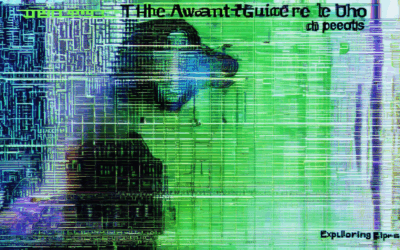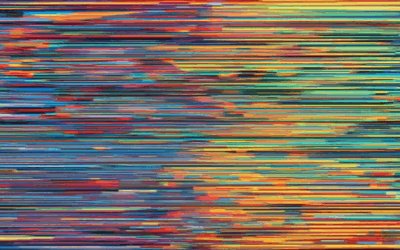Delve into the uncharted territories of music with the innovative and boundary-pushing genre of experimental hip hop, where artistic expression knows no bounds. Characterized by its eclectic blend of styles, experimental hip hop has given rise to some of the most talented and influential artists in the industry. From MF Doom’s intricate lyricism to Tyler the Creator’s genre-bending soundscapes, this dynamic genre continues to evolve and push the limits of what is possible in hip hop. With a rich history spanning decades, experimental hip hop has become a staple of underground culture, attracting fans who crave something new and exciting. As we explore the world of experimental hip hop, we’ll discover the pioneers, innovators, and game-changers who have shaped this genre into what it is today.
With its unique fusion of jazz, rock, and electronic elements, experimental hip hop offers a refreshing respite from the traditional sounds of mainstream hip hop. By embracing experimentation and creativity, artists in this genre have created a diverse range of sub-genres, from alternative hip hop to conscious hip hop, each offering a distinct perspective on the world around us. As we delve deeper into the world of experimental hip hop, we’ll examine the characteristics that define this genre, the notable artists who have contributed to its evolution, and the impact it has had on the broader hip hop landscape.

Understanding Experimental Rappers
Experimental rappers push the boundaries of traditional hip-hop music, incorporating unconventional sounds, styles, and themes into their work.
Characteristics of Experimental Rap
- Unconventional Vocal Delivery: Experimental rappers often experiment with unique vocal techniques, such as spoken word, singing, or even electronic manipulation.
- Complex Rhythms: These artists frequently incorporate complex time signatures, polyrhythms, and unusual drum patterns to create a distinctive sound.
- Unconventional Instrumentation: Experimental rappers may use non-traditional instruments, such as synthesizers, keyboards, or even found objects, to create their music.
- Avant-Garde Themes: Experimental rap often explores abstract concepts, social commentary, and personal narratives, blurring the lines between art and music.
Subgenres of Experimental Rap
Some notable subgenres of experimental rap include:
- Underground Hip-Hop: Characterized by its raw, DIY ethos and often features artists who reject mainstream commercialism.
- Abstract Hip-Hop: Emphasizes experimentation with sound, texture, and atmosphere, often incorporating elements of noise, ambient, and industrial music.
- Conscious Rap: Focuses on socially conscious lyrics, often addressing issues like racism, inequality, and personal empowerment.
Notable Experimental Rappers
- MF DOOM: A pioneer of underground hip-hop, known for his unique vocal style and intricate lyricism.
- Aesop Rock: A highly influential figure in the underground hip-hop scene, celebrated for his dense, poetic lyrics and eclectic production style.
- Vince Staples: A critically acclaimed artist who blends experimental hip-hop with elements of rock, jazz, and electronic music.
Conclusion
Experimental rappers continue to innovate and challenge the status quo in hip-hop, pushing the genre forward through their creative experimentation and artistic expression. By embracing unconventional sounds and themes, these artists inspire a new generation of musicians and fans alike.
Understanding MF Doom’s Place in Experimental Hip Hop
MF Doom is indeed a prominent figure in the experimental hip hop genre, known for his unique production style and lyrical complexity. As a renowned producer, DJ Premier has collaborated with numerous artists who push the boundaries of hip hop, including MF Doom, Danny Brown, and Madlib.
Characteristics of Experimental Hip Hop
Experimental hip hop often incorporates unconventional sounds, samples, and production techniques to create a distinctive sound. Key characteristics include:
- Unconventional sampling: Using unusual samples, such as jazz, soul, or rock tracks, to create a unique sonic landscape.
- Intricate lyricism: Complex rhyme schemes, wordplay, and storytelling techniques that challenge listeners.
- Genre-bending: Blending different styles, such as hip hop, electronic, and rock, to create a distinct sound.
- Experimentation with tempo and time signatures: Unconventional rhythms and time signatures that keep listeners engaged.
MF Doom’s Contributions to Experimental Hip Hop
As a rapper and producer, MF Doom has made significant contributions to the experimental hip hop scene. His music often features:
- Unique vocal processing: Using effects pedals and software to create distinctive vocal textures.
- Complex lyricism: Weaving intricate narratives and exploring themes of social commentary and personal introspection.
- Innovative production techniques: Incorporating unconventional samples and instrumentation to create a distinctive sound.
- Blending of styles: Combining elements of hip hop, jazz, and rock to create a unique sonic identity.
Impact on the Genre
MF Doom’s influence on experimental hip hop cannot be overstated. He has inspired a generation of producers and rappers to push the boundaries of what is possible in hip hop. His innovative approach to production and lyricism has paved the way for others to experiment with new sounds and styles.
Conclusion
In conclusion, MF Doom is indeed a key figure in the experimental hip hop genre. His unique production style, intricate lyricism, and innovative approach to blending styles have cemented his place as a pioneer in the scene. By understanding the characteristics of experimental hip hop and examining MF Doom’s contributions to the genre, we can gain a deeper appreciation for the art form and its potential for innovation and creativity.
The Most Influential Hip Hop Artist
The term “hip hop artist” can refer to various individuals who have made significant contributions to the genre through music, lyrics, and cultural impact. However, when considering the most influential hip hop artist, several factors come into play, including commercial success, lyrical depth, and lasting impact on the culture.
Top Contenders:
- Drake – With over 200 million records sold worldwide, Drake is one of the best-selling hip hop artists of all time.
- Jay-Z – As a rapper, entrepreneur, and businessman, Jay-Z has built a media empire and continues to release critically acclaimed albums.
- Nicki Minaj – A trailblazer for female rappers, Nicki Minaj has broken numerous records and remains a dominant force in the hip hop industry.
Criteria for Evaluation:
To determine the most influential hip hop artist, we need to consider the following criteria:
- Commercial Success – Sales figures, chart performance, and awards won.
- Lyrical Depth – Complexity, storytelling ability, and social commentary.
- Cultural Impact – Influence on fashion, dance, and social justice movements.
- Legacy – Enduring popularity, influence on future generations, and continued relevance.
Analysis and Conclusion:
After evaluating these factors, it becomes clear that Jay-Z stands out as the most influential hip hop artist. His commercial success, lyrical depth, and cultural impact have cemented his status as a legend in the industry. Additionally, his legacy extends beyond his own career, inspiring countless artists and entrepreneurs.
Why Jay-Z?
Jay-Z’s influence can be seen in several areas:
- Business Acumen – He has successfully transitioned from a struggling rapper to a successful entrepreneur, building a media empire and investing in various ventures.
- Social Commentary – Jay-Z’s lyrics often address issues of racism, police brutality, and economic inequality, sparking important conversations and raising awareness about social justice.
- Collaborations and Mentorship – He has collaborated with numerous artists and mentored young talent, helping to shape the sound and direction of contemporary hip hop.
Conclusion:
While opinions may vary, Jay-Z’s impressive resume, combined with his enduring influence on the culture, makes him the most influential hip hop artist of our time.
Difference Between Alternative and Experimental Hip Hop
Alternative and experimental hip hop are two subgenres within the broader category of hip hop music, characterized by distinct sonic and stylistic differences.
Sound and Production Quality
The primary distinction between alternative and experimental hip hop lies in their production quality and overall sound. Alternative hip hop tends to have a cleaner, more refined sound, often incorporating elements of electronic dance music (EDM), rock, or pop into its beats. In contrast, experimental hip hop features a “dirtier” sound, often characterized by unconventional instrumentation, distorted samples, and a more avant-garde approach to production.
Artistic Intent and Creativity
Another significant difference between these subgenres is the artistic intent and level of creativity exhibited by artists. Alternative hip hop often prioritizes catchy hooks, melodies, and harmonies, resulting in a more commercial and radio-friendly sound. Experimental hip hop, on the other hand, frequently pushes the boundaries of traditional hip hop, incorporating elements from various genres, such as jazz, classical, or ambient music, to create a unique and innovative listening experience.
Subcultural Associations and Community
Both alternative and experimental hip hop have strong subcultural associations and communities surrounding them. However, the former tends to be associated with the mainstream hip hop scene, while the latter is often linked to underground and independent hip hop circles. These distinctions can influence the aesthetic, fashion sense, and values of fans and artists within each community.
Examples of Artists and Their Style
Some notable examples of alternative hip hop artists include Kendrick Lamar, J. Cole, and Chance the Rapper, who blend hip hop with elements of R&B, pop, and rock to create a distinctive sound. Experimental hip hop artists, such as MF DOOM, Aesop Rock, and El-P, often incorporate unconventional sounds, lyrics, and production techniques to create a truly unique and innovative listening experience.
Conclusion
In conclusion, the difference between alternative and experimental hip hop lies in their sonic characteristics, artistic intent, and subcultural associations. While alternative hip hop tends to prioritize commercial appeal and catchy hooks, experimental hip hop focuses on pushing the boundaries of traditional hip hop and creating a truly innovative listening experience.
The Four Main Elements of Hip-Hop
The term “hip-hop” refers to a cultural movement that originated in the 1970s in New York City, encompassing various forms of artistic expression, music, dance, fashion, and language. While there may be some debate about the exact number of elements that comprise hip-hop, the following four components are widely recognized as its core pillars:
- Deejaying or Turntabling: Deejaying involves manipulating sound recordings, typically using two turntables and a mixer, to create unique beats and rhythms. This element has evolved significantly since its inception, incorporating digital audio workstations and software plugins.
- Rapping or MCing/Emceeing/Rhyming: Rapping is a form of vocal performance that involves delivering lyrics over a rhythmic beat, often with a focus on storytelling, social commentary, or personal expression. MCing, emceeing, or rhyming refer to the art of crafting and delivering these lyrics.
- Graffiti Painting or Graf/Writing: Graffiti painting, also known as graf or writing, involves creating visual artworks using spray paint, markers, or other mediums on public or private surfaces. This element has become increasingly sophisticated, with many artists pushing the boundaries of color, composition, and technique.
- Breakdancing or Bboying/B-Girling: Breakdancing, also referred to as B-boying or B-girling, is a dynamic dance style characterized by intricate footwork, acrobatic movements, and body isolations. This element has evolved into various sub-styles, including popping, locking, and voguing.
These four elements have coalesced to form the diverse and ever-evolving landscape of hip-hop culture, influencing music, fashion, art, and language worldwide. By understanding and appreciating each component, we can gain a deeper insight into the rich history and creative spirit of this iconic cultural phenomenon.
Understanding Tyler, the Creator’s Music Genre
Tyler, the Creator’s music genre is a subject of debate among fans and critics alike, with some labeling him as an alternative hip hop artist, while others describe his sound as a fusion of various styles.
Exploring Alternative Hip Hop
Alternative hip hop is a subgenre characterized by its experimental approach to hip hop music, often incorporating elements from other genres such as rock, electronic, and R&B. Artists associated with this genre frequently push the boundaries of traditional hip hop, exploring new sounds and themes.
Tyler, the Creator’s Early Work and Horrorcore Influences
Tyler, the Creator’s early music, particularly his debut album “Bastard,” was heavily influenced by horrorcore, a subgenre known for its dark and often humorous lyrics. However, as he progressed in his career, he began to experiment with different styles, incorporating elements of alternative hip hop, jazz, and soul into his music.
Neo-Soul and Jazz Rap Influences
Tyler, the Creator’s music has also been compared to neo-soul, a genre that emerged in the 1990s, characterized by its blend of soul, jazz, and hip hop. His incorporation of live instrumentation and soulful vocals in songs like “Yonkers” and “Domo23” showcases his ability to merge these styles with hip hop.
West Coast Hip Hop and Hardcore Hip Hop Roots
Despite his experimentation with various styles, Tyler, the Creator’s roots remain firmly planted in West Coast hip hop and hardcore hip hop. His lyrics often reflect his experiences growing up in Los Angeles and his affiliation with the Odd Future collective, which has played a significant role in shaping his musical style.
In conclusion, Tyler, the Creator’s music genre defies categorization, blending elements of alternative hip hop, neo-soul, jazz rap, and hardcore hip hop. While his early work was influenced by horrorcore, he has since evolved into a versatile artist capable of experimenting with diverse styles, resulting in a unique sound that sets him apart from his peers.




0 Comments